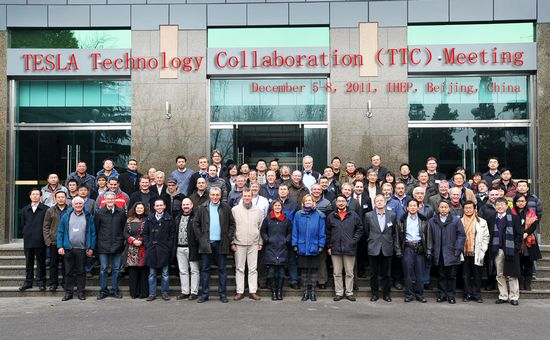IHEP hosts TELSA Technology Collaboration meeting
From December 5 to 8, 2011, more than 100 scientists around the world met at the Institute of High Energy Physics (IHEP) to push the superconducting radiofrequency, or SCRF, technology forward.
 |
| group photo of 2011 TELSA Technology Collaboration meeting |
At the meeting scientists reported on the latest development in ILC superconducting technology, ADS accelerating technology, 1.3 GHz superconducting technology, XFEL project etc. Detailed discussions were also carried out covering materials of superconducting cavity, cavity manufacture and test, and cryostat.
As the chosen technology for the International Linear Collider, the SCRF cavity is a hot (or cold) topic for hundreds of scientists who are contributing to R&D for the proposed electron-positron accelerator.
Superconducting cavity recipes aren't simple. The tiniest piece of dust inside a cavity can impact how efficiently it can accelerate particles, and getting the cavities sparkling clean is a complicated process. Laboratories and universities throughout the world have each developed their own cavity recipes, making it difficult to determine which one is the best process. At the bi-yearly TTC meeting hosted by IHEP, Peking University and Tsinghua University, scientists conducted a free and open exchange of scientific and technical knowledge, expertise, engineering designs, and equipment.
The meeting at IHEP was the first TESLA Technology Collaboration (TTC) Workshop in China, which presented an opportunity for China’s participation in TELSA technology research. The mission of TTC meeting is to advance SCRF technology R&D and related accelerator studies across the broad diversity of scientific applications, and to keep open and provide a bridge for communication and sharing of ideas, developments, and testing across associated projects.